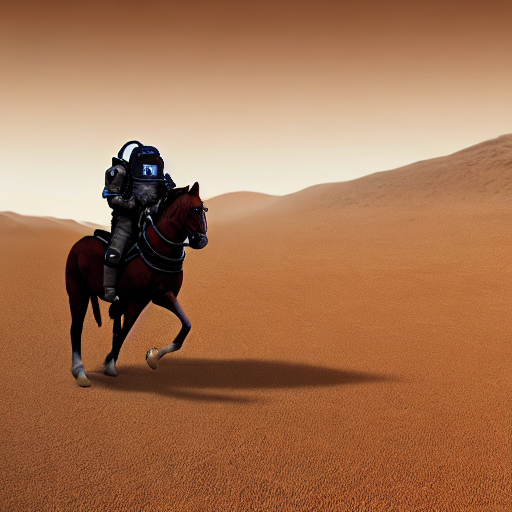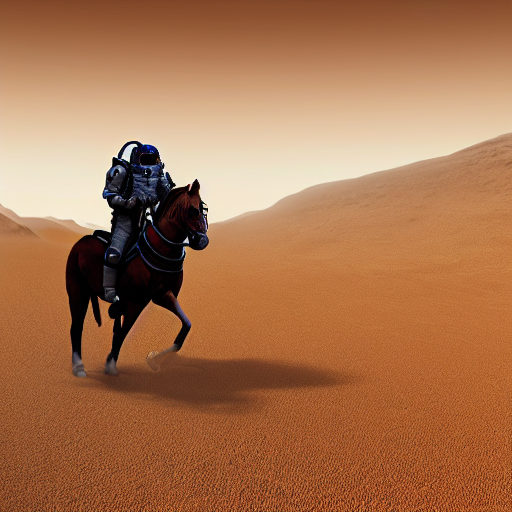Diffusers documentation
Schedulers
Schedulers
Diffusion pipelines are inherently a collection of diffusion models and schedulers that are partly independent from each other. This means that one is able to switch out parts of the pipeline to better customize a pipeline to one’s use case. The best example of this are the Schedulers.
Whereas diffusion models usually simply define the forward pass from noise to a less noisy sample, schedulers define the whole denoising process, i.e.:
- How many denoising steps?
- Stochastic or deterministic?
- What algorithm to use to find the denoised sample
They can be quite complex and often define a trade-off between denoising speed and denoising quality. It is extremely difficult to measure quantitatively which scheduler works best for a given diffusion pipeline, so it is often recommended to simply try out which works best.
The following paragraphs shows how to do so with the 🧨 Diffusers library.
Load pipeline
Let’s start by loading the stable diffusion pipeline. Remember that you have to be a registered user on the 🤗 Hugging Face Hub, and have “click-accepted” the license in order to use stable diffusion.
from huggingface_hub import login
from diffusers import DiffusionPipeline
import torch
# first we need to login with our access token
login()
# Now we can download the pipeline
pipeline = DiffusionPipeline.from_pretrained("runwayml/stable-diffusion-v1-5", torch_dtype=torch.float16)Next, we move it to GPU:
pipeline.to("cuda")Access the scheduler
The scheduler is always one of the components of the pipeline and is usually called "scheduler".
So it can be accessed via the "scheduler" property.
pipeline.scheduler
Output:
PNDMScheduler {
"_class_name": "PNDMScheduler",
"_diffusers_version": "0.8.0.dev0",
"beta_end": 0.012,
"beta_schedule": "scaled_linear",
"beta_start": 0.00085,
"clip_sample": false,
"num_train_timesteps": 1000,
"set_alpha_to_one": false,
"skip_prk_steps": true,
"steps_offset": 1,
"trained_betas": null
}We can see that the scheduler is of type PNDMScheduler. Cool, now let’s compare the scheduler in its performance to other schedulers. First we define a prompt on which we will test all the different schedulers:
prompt = "A photograph of an astronaut riding a horse on Mars, high resolution, high definition."Next, we create a generator from a random seed that will ensure that we can generate similar images as well as run the pipeline:
generator = torch.Generator(device="cuda").manual_seed(8)
image = pipeline(prompt, generator=generator).images[0]
image

Changing the scheduler
Now we show how easy it is to change the scheduler of a pipeline. Every scheduler has a property SchedulerMixin.compatibles
which defines all compatible schedulers. You can take a look at all available, compatible schedulers for the Stable Diffusion pipeline as follows.
pipeline.scheduler.compatibles
Output:
[diffusers.schedulers.scheduling_lms_discrete.LMSDiscreteScheduler,
diffusers.schedulers.scheduling_ddim.DDIMScheduler,
diffusers.schedulers.scheduling_dpmsolver_multistep.DPMSolverMultistepScheduler,
diffusers.schedulers.scheduling_euler_discrete.EulerDiscreteScheduler,
diffusers.schedulers.scheduling_pndm.PNDMScheduler,
diffusers.schedulers.scheduling_ddpm.DDPMScheduler,
diffusers.schedulers.scheduling_euler_ancestral_discrete.EulerAncestralDiscreteScheduler]Cool, lots of schedulers to look at. Feel free to have a look at their respective class definitions:
- LMSDiscreteScheduler,
- DDIMScheduler,
- DPMSolverMultistepScheduler,
- EulerDiscreteScheduler,
- PNDMScheduler,
- DDPMScheduler,
- EulerAncestralDiscreteScheduler.
We will now compare the input prompt with all other schedulers. To change the scheduler of the pipeline you can make use of the
convenient ConfigMixin.config property in combination with the ConfigMixin.from_config() function.
pipeline.scheduler.config
returns a dictionary of the configuration of the scheduler:
Output:
FrozenDict([('num_train_timesteps', 1000),
('beta_start', 0.00085),
('beta_end', 0.012),
('beta_schedule', 'scaled_linear'),
('trained_betas', None),
('skip_prk_steps', True),
('set_alpha_to_one', False),
('steps_offset', 1),
('_class_name', 'PNDMScheduler'),
('_diffusers_version', '0.8.0.dev0'),
('clip_sample', False)])This configuration can then be used to instantiate a scheduler of a different class that is compatible with the pipeline. Here, we change the scheduler to the DDIMScheduler.
from diffusers import DDIMScheduler
pipeline.scheduler = DDIMScheduler.from_config(pipeline.scheduler.config)Cool, now we can run the pipeline again to compare the generation quality.
generator = torch.Generator(device="cuda").manual_seed(8)
image = pipeline(prompt, generator=generator).images[0]
image

Compare schedulers
So far we have tried running the stable diffusion pipeline with two schedulers: PNDMScheduler and DDIMScheduler. A number of better schedulers have been released that can be run with much fewer steps, let’s compare them here:
LMSDiscreteScheduler usually leads to better results:
from diffusers import LMSDiscreteScheduler
pipeline.scheduler = LMSDiscreteScheduler.from_config(pipeline.scheduler.config)
generator = torch.Generator(device="cuda").manual_seed(8)
image = pipeline(prompt, generator=generator).images[0]
image

EulerDiscreteScheduler and EulerAncestralDiscreteScheduler can generate high quality results with as little as 30 steps.
from diffusers import EulerDiscreteScheduler
pipeline.scheduler = EulerDiscreteScheduler.from_config(pipeline.scheduler.config)
generator = torch.Generator(device="cuda").manual_seed(8)
image = pipeline(prompt, generator=generator, num_inference_steps=30).images[0]
image

and:
from diffusers import EulerAncestralDiscreteScheduler
pipeline.scheduler = EulerAncestralDiscreteScheduler.from_config(pipeline.scheduler.config)
generator = torch.Generator(device="cuda").manual_seed(8)
image = pipeline(prompt, generator=generator, num_inference_steps=30).images[0]
image

At the time of writing this doc DPMSolverMultistepScheduler gives arguably the best speed/quality trade-off and can be run with as little as 20 steps.
from diffusers import DPMSolverMultistepScheduler
pipeline.scheduler = DPMSolverMultistepScheduler.from_config(pipeline.scheduler.config)
generator = torch.Generator(device="cuda").manual_seed(8)
image = pipeline(prompt, generator=generator, num_inference_steps=20).images[0]
image

As you can see most images look very similar and are arguably of very similar quality. It often really depends on the specific use case which scheduler to choose. A good approach is always to run multiple different schedulers to compare results.